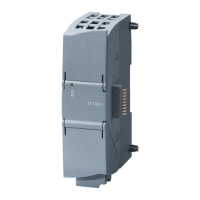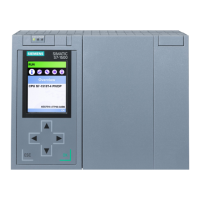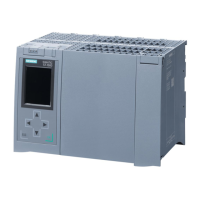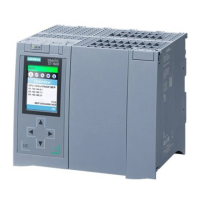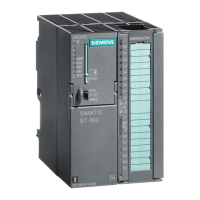PLC concepts
4.1 Execution of the user program
S7-1200 Programmable controller
System Manual, 03/2014, A5E02486680-AG
91
Table 4- 6 Startup information for the diagnostic error interrupt OB
IOstate WORD IO state of the device:
• Bit 0 = 1 if the configuration is correct, and = 0 if the configuration is
no longer correct.
• Bit 4 = 1 if an error is present (such as a wire break). (Bit 4 = 0 if
there is no error.)
• Bit 5 = 1 if the configuration is
correct, and = 0 if the configuration
is correct again.
• Bit 6 = 1 if an I/O access error has occurred. Refer to LADDR for the
hardware identifier of the I/O with the access error. (Bit 6 = 0 if there
is no error.)
LADDR HW_ANY Hardware identifier of the device or functional unit that reported the
1
TRUE if more than one error is present
The LADDR input contains the hardware identifier of the device or functional unit which returned the error. The
hardware identifier is assigned automatically when components are inserted in the device or network view and appears
in the Constants tab of PLC tags. A name is also assigned automatically for the hardware identifier. These entries in the
Constants tab of the PLC tags cannot be changed.
Pull or plug of modules OB
The "Pull or plug of modules" OB executes when a configured and non-disabled distributed
I/O module or submodule (PROFIBUS, PROFINET, AS-i) generates an event related to
inserting or removing a module.
Pull or plug of modules event
The following conditions generate a pull of plug of modules event:
● Someone removes or inserts a configured module
● A configured module is not physically present in an expansion rack
● An incompatible module is in an expansion rack that does not correspond to the
configured module
● A compatible module for a configured module is in an expansion rack, but the
configuration does not allow substitutes
● A module or submodule has parameterization errors
If you have not programmed this OB, the CPU changes to STOP mode when any of these
conditions occur.

